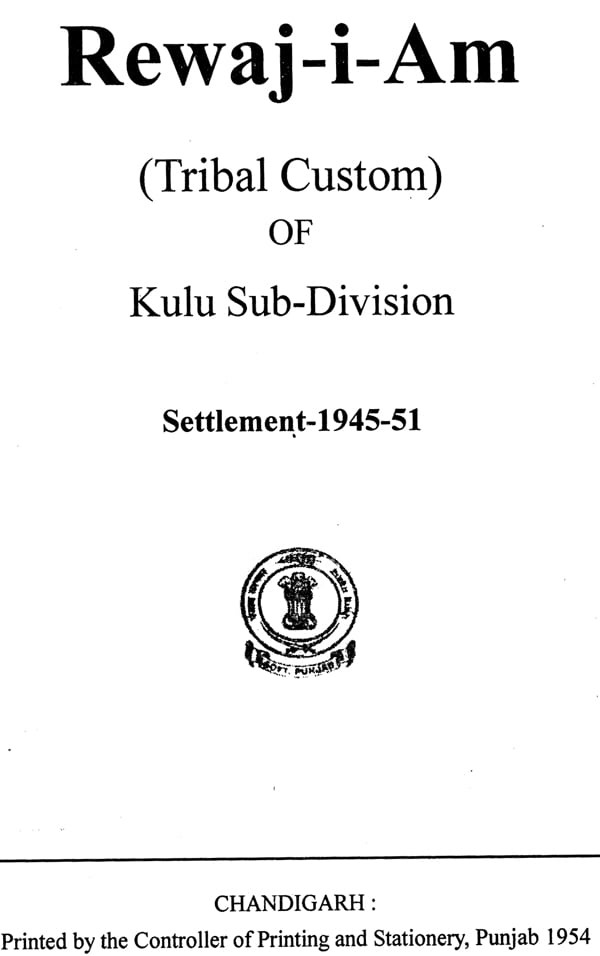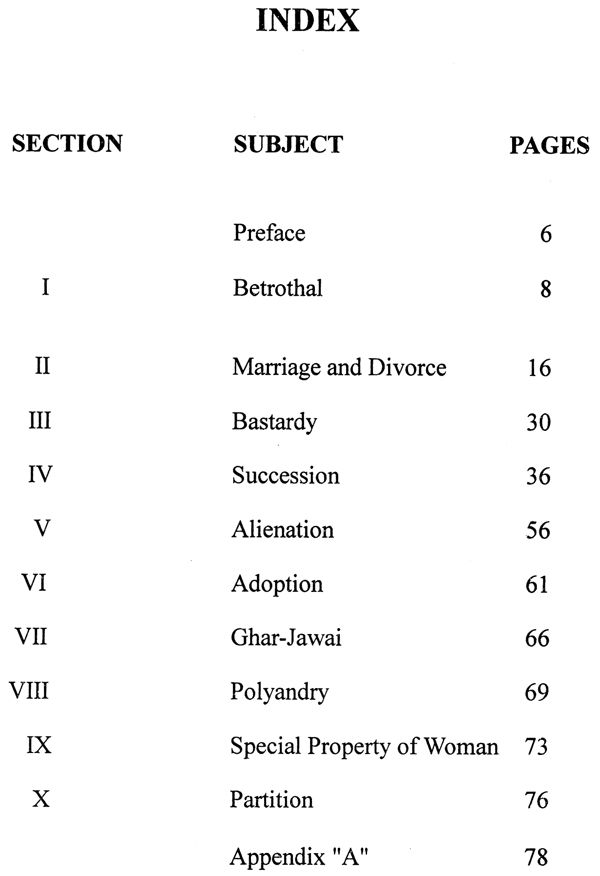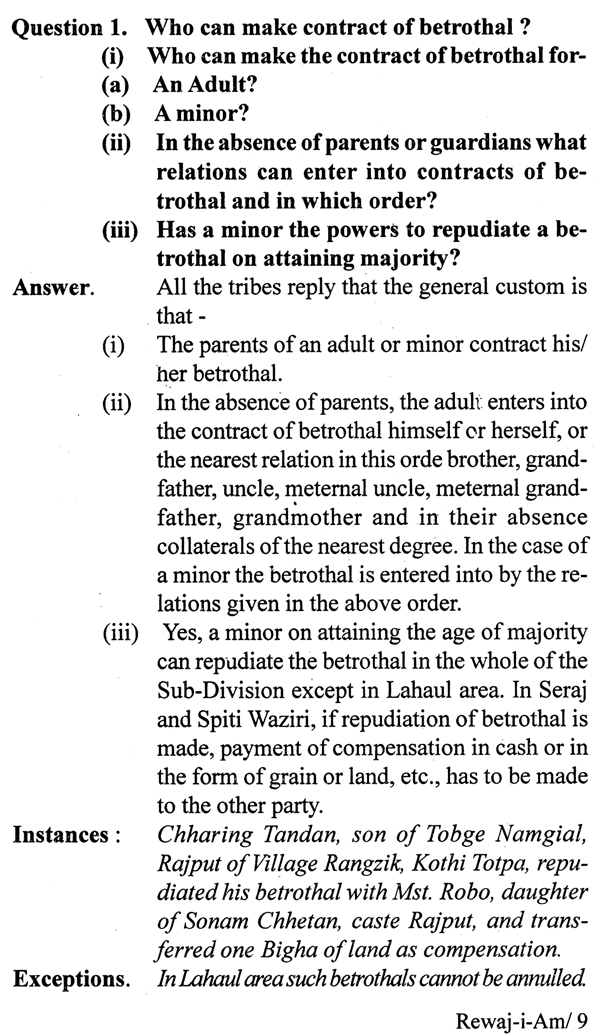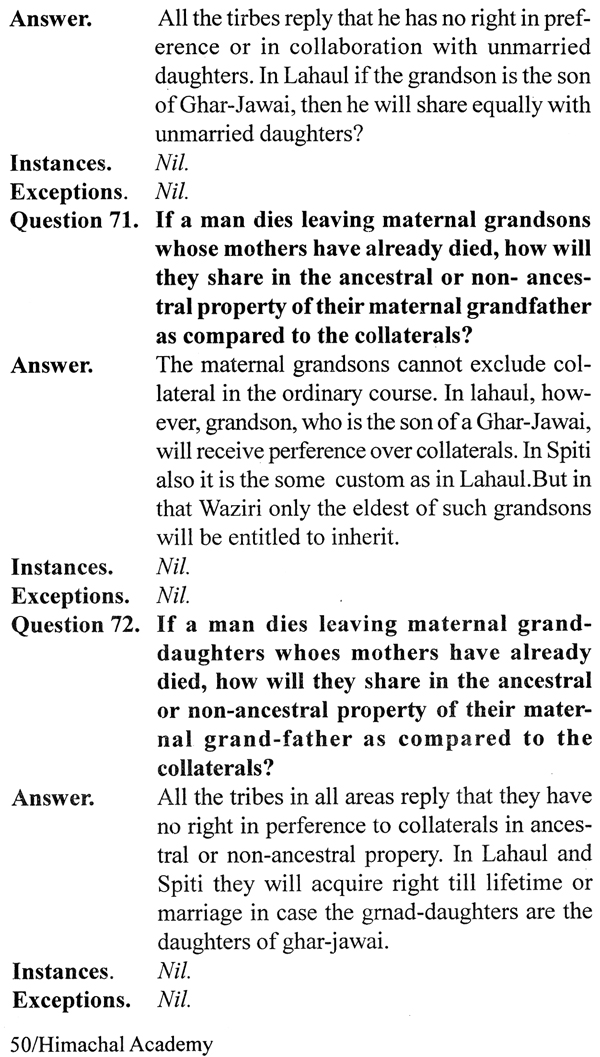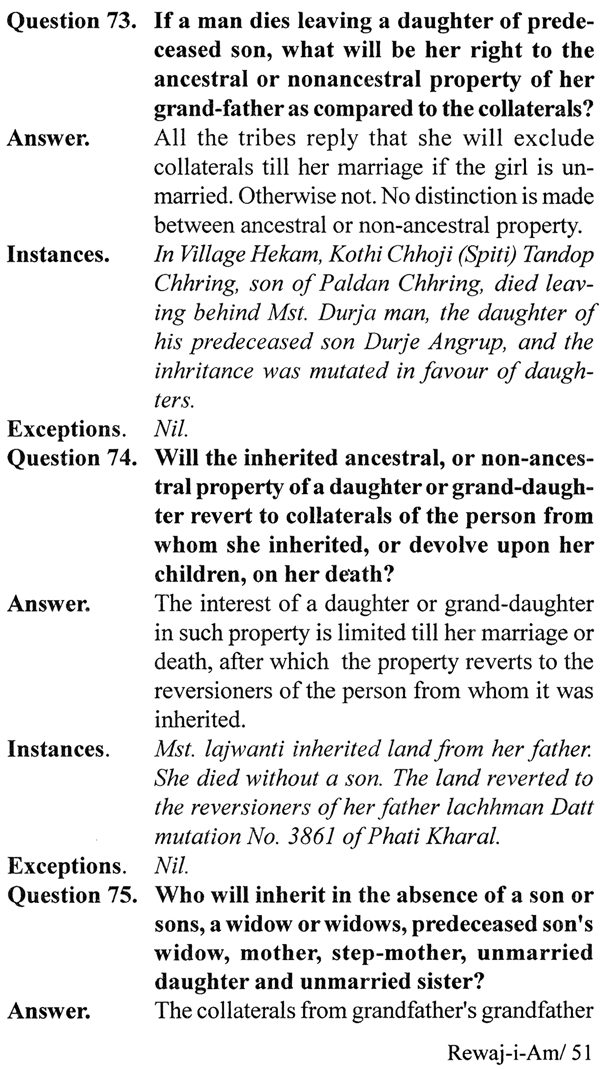Preface The Riwaj-i-Am (Tribal Custom) of Kulu Sub-Division was first drawn up in 1868 by the then Settlement Officer, Sir James Lyall. This contained a set of only 25 ques-tions, answers to which were neither comprehensive, nor supported by actual examples. It was a vernacular record with no Eriglish translation of it. This work was some-what meagre and silent on various customs prevailing in the area, like Betrothal, Bastardy, Guardianship, Minority and Polyandry. The framing of a complete manual of the Customary Law was, therefore, a longfelt necessity and so Govern-ment was moved for holding a fresh enquiry under para 565 of the Punjab Settlement Manual in the various cus-toms. Government sanctioned a fresh enquiry acordingly,vide Secretary to the Financial Commissioner's Memo.No.111-R,dated the 27th January 1948. An axhaustive questionnaire comprising of 139 questions was drawn up in consultation with the members of the Bar and leading persons of the Sub-division from all tribes. This was set as a code for making village to village enqui-ries. The Settlement Tehsildar, Tahsildar Mahal, Kulu, and Naib-Tahsildars, Seraj and Lahaul conducted exhaustive enquiries into the prevailing customs while they were on tour in connectidn with Settlement operations. The answers recorded by these officers were then verified by me at various places. I held two big meetings, one was held in Kulu, where leading representatives of Kulu, Lahaul and Spiti Valleys, representing all the tribes, i.e. Rajputs, Brahmins, Kolis, Beragis, Gosains and Harijans, whose names are given in Appendix A, and members of the Bar, were present. Every question and answer to it was discussed with then in detail. It was ensured that they understood the questions thoroughly. The answers already recorded at important centre in the Sub-Division were verified and corrected where necessary. Their statements as to the correctness of the answers were also recorded. The other meeting was held at Banjar which was represented by the leading people of the Seraj Sub-Tahsil. The name of these persons are also given in the same appendix. Kulu Sub-Division, according to its vast geographical and broad natural features has different customs, prevailing in different areas, and, therefore, a lot of labour had to be spent in compiling a consolidated Riwaj-i-Am. It now constitutes of 124 questions and is a good narrative of usages followed by the various tribes of the Sub-Division. The examples quoted in support of the answers have been supplied by the Settlement and the Mahal Tahsildars. The Presidents of the Bar Association, Dharamsala and Kulu, were addressed to give the list to High Court Rul-ings on various customs, but unfortunately, they were unable to supply such a list. It is, therefore, regretted that it has not been possible to quote High Court Ruling, if there is any, in the Riwaj-i-Am. 4. The varnacular copies of the Riwaj-i-Am have been sup-plied to the High Court, and Courts of the District and Sessions Judge, Hoshiarpur,and Senior Sub Judge, Dharamsala, in accordance with para 565 of the Settle-ment Manual.
Sample Pages
